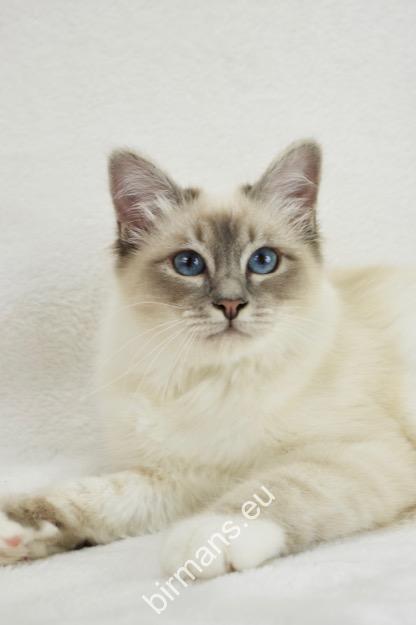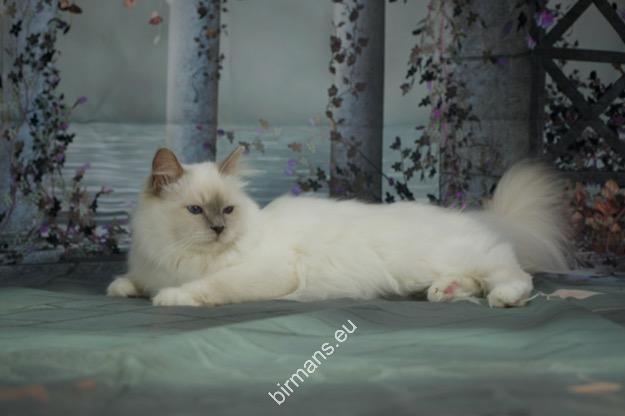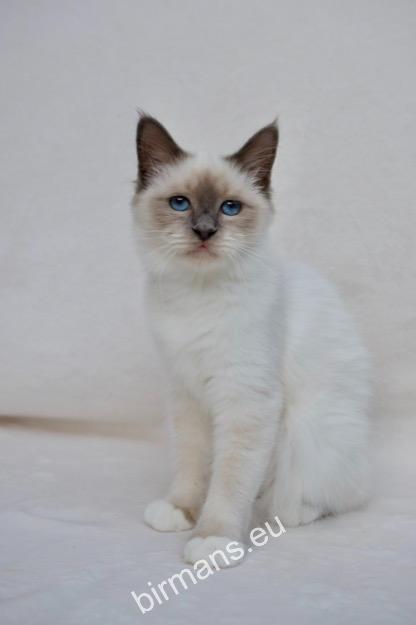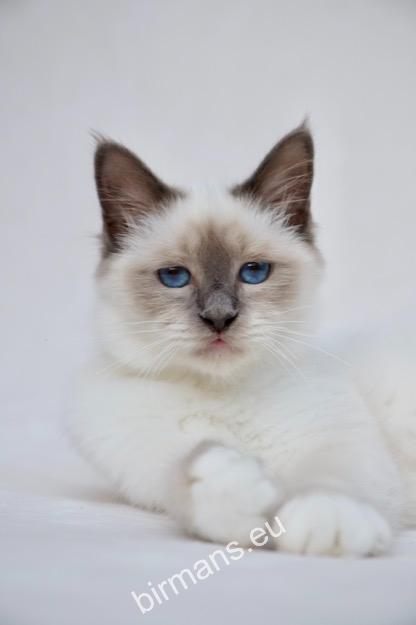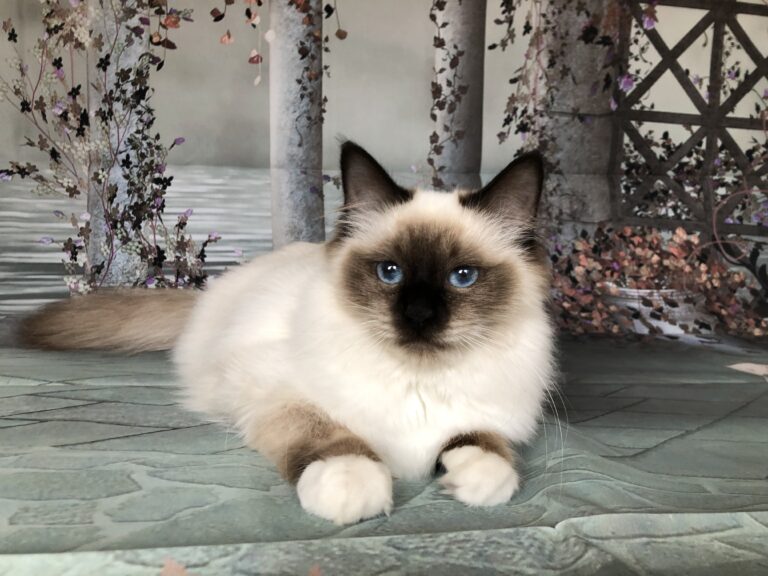Breed description
The character of the Birman cat
The Birman cat stands out not only for its majestic appearance, but also for its extraordinary intelligence.
Extremely popular in the United States, England and France, it has retained its exclusivity, avoiding becoming a cat adopted by the masses.
Its nature is characterised by harmony and a happy medium that reflects the cat’s behaviour and needs.
The Birman cat is deeply attached to its owner, demanding attention and affection, but is never pushy or demanding. This breed of cat becomes a kind, adaptable and loving family member, able to live in harmony with its environment.
If you are looking for a four-legged companion who will follow your every move, who will always listen to you and whose beautiful blue eyes are full of love and affection, then the Burmese Holy Temple cat is the perfect choice for you. Our kittens are sensitive to even the most subtle vibrations and are ready to shower you with their love – because their owner means the world to them.
Birman cats have a wide range of personalities – some are curious and approach strangers, while others are more reserved and need more time to open up. Some Birmans playfully commandeer your hair ties, while others enjoy ‘fishing’ in the bath water.
Although each cat is unique, Birman cats are generally balanced: even the most active Birman will not be as lively as a Siamese, but even the calmest Birman will be more lively than a Persian.
As one customer put it, “This cat is beautiful, but her soul is even more beautiful.”
The appearance of the Birman cat
The most important aspect of breeding Birman cats is to maintain harmony.
Both their appearance and their nature follow this principle. Birmans are medium sized, with strong bone structure and short legs, round heads and slightly convex foreheads. Their ears are neither too large nor too small and their eyes are always azure blue and almond-shaped. The length of their nose is also well balanced – neither too short like a Persian nor too long like a Siamese.
Males are generally larger and heavier than females, which are light and airy.Their fur is semi-long and silky to the touch, which gives them a particularly pleasant feeling when being pet.
Their coat colours follow the classic Siamese pattern.
We have also prepared an informative blog article about the colours, which is available on our website!
The undercoat is minimal and therefore does not require much care, ranging in colour from light ivory to coffee brown. Birman cats are characterized by their snow-white “socks” and “slippers,” which are symmetrically positioned on their legs. These traits are particularly important in exhibitions, but unfortunately are not always perfectly inherited. Even the offspring of parents with excellent “slippers” may have less symmetrical offspring, and vice versa. The Birman kittens’ long, flagged tails and deep blue eyes add an additional elegance to their appearance.
Colour notes in our breed:
- Seal point SBI n, Seal point
- Blue Point SBI a, Blue Point
- Chocolate Point SBI b, Chocolate Point
- Lilac Point SBI c, Purple Point
And all the colours listed so far are Tabby Lynx versions:
- Seal Lynx Point ( Tabby) SBI n 21, Seal Lynx
- Blue Lynx Point ( Tabby) SBI a 21, Blue Lynx
- Chocolate Lynx Point ( Tabby) SBI b 21, Chocolate Lynx
- Lilac Lynx Point ( Tabby) SBI c 21, Purple Lynx
The history of the Birman cat
As for its history, there is complete confusion: from legends that seem unbelievable in today’s realistic world to precise dates, nothing is certain, perhaps only two facts:
- Their origin is not clear
- The first example shown at an exhibition was registered in Paris in 1926
As mentioned above, there are many legends and stories about the origin of the Birman cat, none of which have been fully confirmed.
The name comes from the legend: the Burmese Holy Temple Cat.
The legend
We are transported back in time to medieval Burma, including a secluded monastery where priests lived with their white middle-haired cats.
One day they were attacked by thieves and one of the priests (Mun Hat, who had dedicated his life to the worship of the blue-eyed goddess Cun Kiang Se) was murdered.
Then a divine miracle happened and the kittens all turned blue-eyed, golden brown with silky fur and white legs. The appearance of the divine markings so confused the robbers that the monks easily repelled them.
This story was first recorded by a breeder in 1924. The history of the breed is lost in obscurity.
Other sources tell of a pair smuggled from Burma to France in 1919, the male member of which died on the journey, but the female was already pregnant and the species is thought to have originated from there. We think it is safe to say that the breed is of French origin.
The first documentation
The first documented appearance of the Birman cat was at an exhibition in Paris in 1926. Since then there have been many debates about its origins, but the breed’s popularity has remained undiminished. Despite the legend and the mystery, the Birman cat is now one of the prides of France and is recognised and loved worldwide.
Want to know how you can add a beautiful, loving Birman kitten to your family? Click on the button below!

